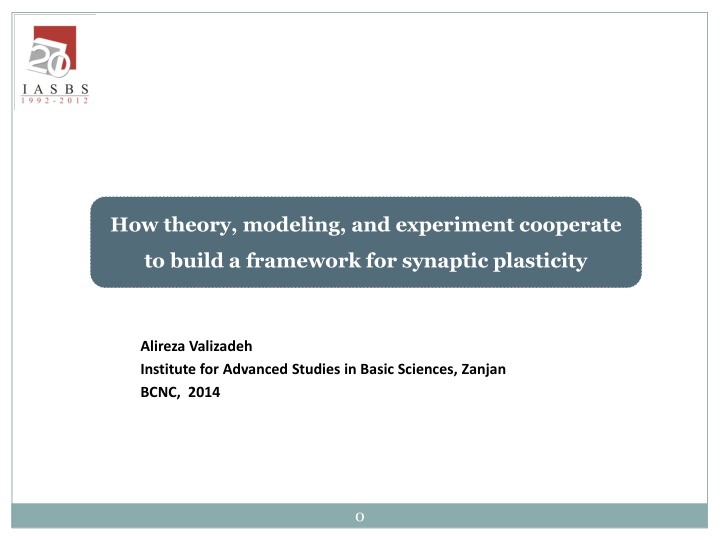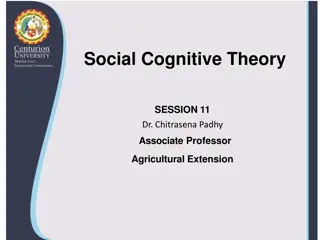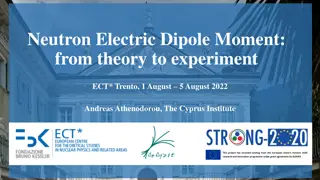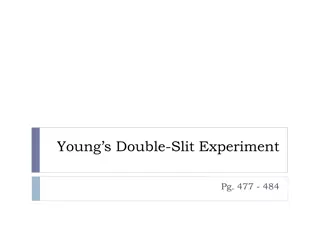How theory, modeling, and experiment cooperate to build a framework for synaptic plasticity
Synaptic plasticity, a fundamental process in neuroscience, is explored through a combination of theory, modeling, and experimentation. Insights from pioneers like William James and Donald Hebb, along with modern research on BCM theory and STDP, shed light on the mechanisms underlying neural connections and the formation of habits. The interplay between theoretical concepts, computational models, and empirical studies is crucial in advancing our understanding of synaptic plasticity and its implications for learning and memory.
Download Presentation

Please find below an Image/Link to download the presentation.
The content on the website is provided AS IS for your information and personal use only. It may not be sold, licensed, or shared on other websites without obtaining consent from the author.If you encounter any issues during the download, it is possible that the publisher has removed the file from their server.
You are allowed to download the files provided on this website for personal or commercial use, subject to the condition that they are used lawfully. All files are the property of their respective owners.
The content on the website is provided AS IS for your information and personal use only. It may not be sold, licensed, or shared on other websites without obtaining consent from the author.
E N D
Presentation Transcript
How theory, modeling, and experiment cooperate to build a framework for synaptic plasticity Alireza Valizadeh Institute for Advanced Studies in Basic Sciences, Zanjan BCNC, 2014 0
?? ??= ? ? + ? ?.? ?? ??= ? ?? ? (?? ,??) 1
William James (1890) : those tracts of conduction which have been already most in use! habits in living beings are due to plasticity of the organic materials the currents, once in, must find a way out they leave traces Donald Heb (1949): Let us assume that the persistence or repetition of an activity (or "trace") tends to induce lasting cellular changes that add to its stability. When an axon of cell A is near enough to excite a cell B and repeatedly or persistently takes part in firing it, some growth process or metabolic change takes place in one or both cells such that A's efficiency, as one of the cells firing B, is increased. The Principles of Psychology (1890), Dover Publications, 1950. The Organization of Behavior (1949), New York: Wiley & Sons. 2
BCM theory Bienenstock, Cooper, and Munro, J Neurosci, 1982 3
Cells that fire together, wire together?[1] cell A is near enough to excite a cell B and repeatedly or persistently takes part in firing it, some growth process or metabolic change takes place in one or both cells such that A's efficiency, as one of the cells firing B, is increased.[2] [1] Shatz, Carla J. (September 1992). "The Developing Brain". Scientific American. 267 (3): 60 7. Bibcode:1992SciAm.267c..60S. [2] Hebb, D.O. (1949). The Organization of Behavior. New York: Wiley & Sons. 4
From Wikipedia: https://en.wikipedia.org/wiki/Carla_J._Shatz Shatz is credited with coining the sentence summarizing the Hebbian theory: "Cells that fire together, wire together." Although a similar phrase might first have appeared in print in Siegrid L wel's Science article in January, 1992, Shatz had been using it in lectures for a number of years before. In her September 1992 Scientific American article, she wrote, "Segregation to form the columns in the visual cortex [...] proceeds when the two nerves are stimulated asynchronously. In a sense, then, cells that fire together wire together. The timing of action-potential activity is critical in determining which synaptic connections are strengthened and retained and which are weakened and eliminated."[8] 5
STDP in hippocampal cell culture. Each symbol is one neuron. Bi and Poo, J. Neurosci. 1998 Markram et al,Science 1996 6
Integrate-and-Fire Neuron Model ODE System for the Membrane Potential V y = f (y, t) y = ge gi Special Events e (y, t) = V V_th 7
STDP Model ODE System for the STDP Variables Special Events Weight Matrix Update Rules NE NN output (Pe) output (Pr) NN NN GE GR input (M) input (M) 8
Learning window W as a function of the delay s between postsynaptic firing and presynaptic spike arrival. Gerstner et al. Nature, 1996 9
STDP Exists in Different Forms Feldman - Neuron, 2012 11
Experimentally reported STDP curves vary qualitatively depending on the system and the neuron type Abbott, Nelson - Nature neuroscience, 2000 12
Comparison of unshifted and shifted STDP steady-state distribution of synaptic strengths shiftedSTDP (d~2ms) Conventional unshifted STDP Babadi and Abbott, PLoS computational biology, 2010 13
Loop elimination through STDP Gilson et al., Biological Cybern. (2009). Kozlosky and Cecci, Front Neural circuits (2010). 14
Triplet model The triplet rule reproduces the finding that increase frequency of pair repetition leads to increased potentiation in visual cortex pyramidal neurons. Sjostrom, Turrigiano and Nelson, Neuron 2001 Pfister, J. P., & Gerstner, W. Journal of Neuroscience(2006) 15
Variations on Conventional STDP - Nonlinear weight-dependent STDP (Gutig et al., 2003; Morrison et al.,2007) - Triplet-based STDP (Pfister and Gerstner, 2006) - Voltage based plasticity (Clopath et al., 2010) - Pair-based with shifted profile (Babadi and Abbott, 2010) 16
STDP as the first law of synaptic plasticity? Shouval, Wang and Wittenberg, Front Comp Neuro 2010 17
Rao and Sejnowski, Novartis Found Symp 2001 Rao and Sejnowski, Neural Comput 2001 Sjostrom and Hausser, Neuron 2006 Froemke, Poo, Dan, Nature 2005 19
STDP and synchronization Bayati and Valizadeh, Phys. Rev. E (2012). 20
STDP and synchronization Lubenov and Siapas, Neuron (2008). 21
THANK YOU 22























